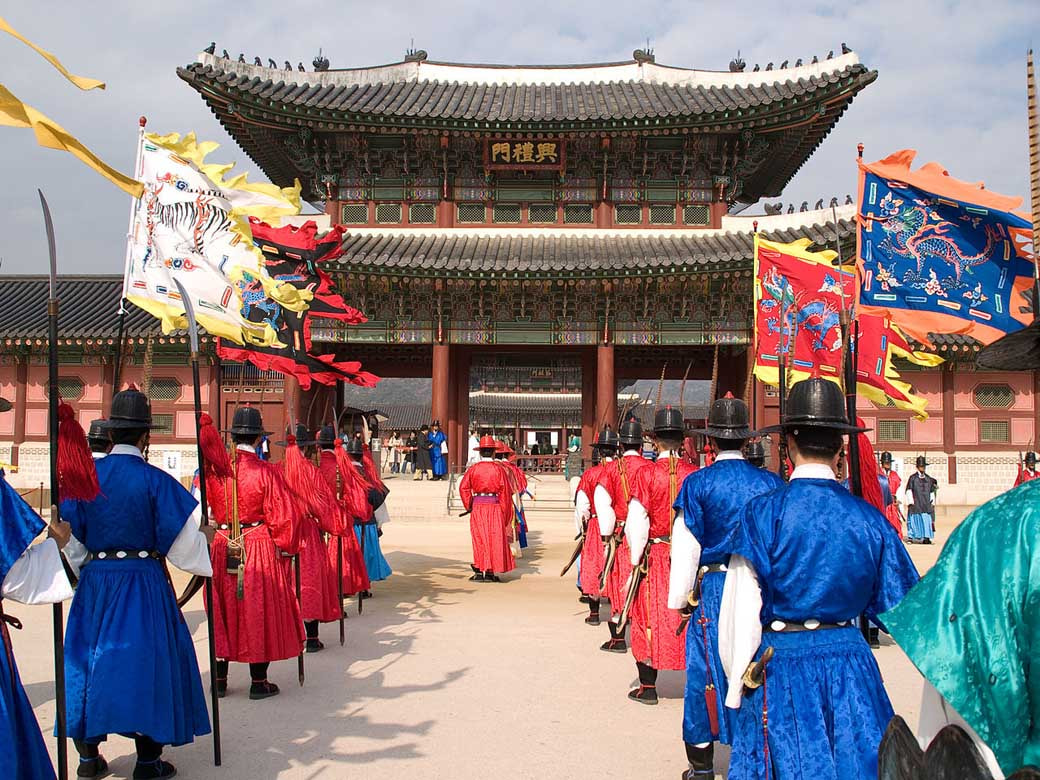- Home
- Vacation Packages and Tours
- South Korea
- Beautiful Seoul
Beautiful Seoul

Cities : Seoul (3N)
Sightseeing
- Changdeokgung Palace
- Blue House
- Jogyesa Temple
- Gyeongbokgung Palace with Royal Guard Changing Ceremony
- Namdaemun Market
- Nami Island
- Nanta Show
- Everland Park
Meals
- 3 Breakfast
Day wise travel itinerary
- Day 1 :Arrive at Incheon Airport & Transfer to Seoul City, Check in into Hotel. Evening Enjoy Nanta Show
After complete your immigration, you will meet local representative. You will depart for Seoul. After complete your lunch, you will travel to hotel. Check In time 1500 Hours. Relax at hotel. Evening enjoy Nanta Show. A show blending acrobatics, martial arts, music and culinary skills – that’s got to be a unique combination. Dinner in Restaurant. Overnight In Seoul.
- Day 2 :Seoul City Tour
Breakfast at Hotel, Depart for Tour - Pass by Joggye Buddhist Temple, Blue House (Korean President House) – Visit main Palace, (Gyeongbok Palace) and enjoy Royal Guard Changing Ceremony, Pass by Insadong antique shopping street, Lunch at local restaurant, Shopping center of Korean Ginseng or Amethyst, Traditional Market, Namdaemun - Changdeok Palace. Overnight in Seoul.
- Breakfast
- Day 3 :Nami Island Tour
Breakfast at Hotel, Morning after Breakfast, Depart for Tour Nami Island – Petit France –shopping(Ginseng, amethyst ) – hotel Nami Island - An artificially decorated small island and famous for drama(Winter Sonata) shooting site / Petit France - cozy village with French style atmosphere and a drama shooting site (a lover from star). Overnight in Seoul.
- Breakfast
- Day 4 :Check Out From Hotel & Depart for Airport
Morning after Breakfast, you will check out from Seoul Hotel & depart for Airport with Happy Memories.
- Breakfast
Sightseeing

Changdeokgung Palace
Timings -
"Feb-May, Sep-Oct 09:00-17:00

Blue House
The Blue House is the executive office and official residence of the South Korean head of state, the President of South Korea, and is located in the capital city of Seoul. The Blue House is in fact a complex of buildings, built largely in the traditional Korean architectural style with some modern elements.

Jogyesa Temple

Gyeongbokgung Palace with Royal Guard Changing Ceremony
Gyeongbokgung Palace, located north of Gwanghwamun Square, is one of the most iconic sights in all of Korea thanks to its long and storied history. Construction on Gyeongbokgung Palace was completed in 1395 at the beginning of the Joseon Dynasty during the reign of King Taejo. Expanded over time, Gyeongbokgung was the center of power during the Joseon Dynasty until the Japanese invasion of 1592-1598. During this time, the palace was destroyed by fire and left in ashes. One fire was started by slaves trying to destroy legal status records. The ruins of Gyeongbokgung were abandoned for the next 270 years. 1868, Gyeongbokgung was rebuilt and restored as an icon of Korea with help from Heungseon Daewongun, also known as Prince Regen.

Namdaemun Market

Nami Island

Nanta Show
Since our first performance in 1997 at the Edinburg Fringe Festival NANTA received it’s first award for best performance. This now world famous nonverbal performance 8,100,000 people the largest audiences in Korean history. Since its first debut NANTA performance has been on the road of success around the world. In 2004 NANTA finally made an appearance on New York’s Broadway. This opportunity opened up new doors for Korean culture and performances. Now about 7,000,000 people around the world are enjoying NANTA’s spectacular performances. NANTA performances can also be seen at three different theater locations within Korea. NANTA also received an award for Best Urban program in 2009 and is also being highly recommended by tourist and locals alike. “This is a must see performance” As 750,000 foreign visitors per year come to Korea to enjoy NANTA and Korean culture.
Gallery
- CHANGDEOKGUNG

- Map

- JOGYESA TEMPLE

- Gyeongbokgung Palace

- CHANGDEOKGUNG

- Map





